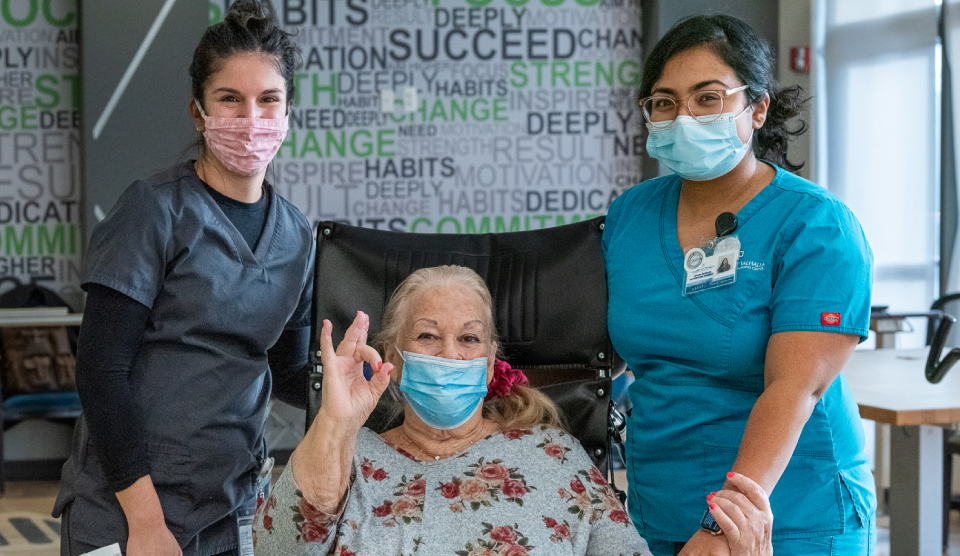Patients Age: 72
Admission Date: 5/10/18
Admitted From: Burke
Discharge Date: 7/22/18
Discharged To: Home
Length of Stay: 2.5 Months
Reason for Stay: Malignant Neoplasm of Cerebellum (Metastatic Brain Cancer)
Details of Experience:
“You’ll need to use a sliding board to transfer for the rest of your life.” That was the conclusion of many of Dorothy’s physicians and therapists. After months of undergoing treatment for her brain cancer and intense therapy at Burke Rehabilitation Hospital, it seemed that Dorothy’s chances to walk again were unrealistic. Dorothy received outstanding treatment from her oncologists, surgeons, and therapists. Both she and her husband enjoyed fulfilling and successful careers and were well-connected to top healthcare providers. However, Dorothy had a long, challenging journey ahead of her.
Once she completed the acute rehab program at Burke, she decided to keep moving forward and asked to be transferred to sub-acute for further rehabilitation and treatment. When Dorothy arrived at The Grove, she was close to flawless with the transfer board. If she would want to continue remaining under sub-acute care, new goals would have to be put in place. On the surface, one can mistake Dorothy’s easy going and pleasant nature as “giving up or being lazy.” Behind her passive demeanor, there was a force of stoicism and hopeful spirit, that with continuous therapy and care, would overcome the side effects of brain cancer. Dorothy was determined to fight.
Therapeutic success isn’t measured by the number of steps one can take or the time frame needed to complete the goals. We measure success against the unique challenges one faces. For the first few weeks, Dorothy required the use of a standing frame machine to support her lower body and knees, allowing her to begin bearing weight in her legs. After a few weeks of committed and consistent therapy, Dorothy was able to be on the machine for a continuous half hour. She then upgraded to the light gait machine, a device that uses a harness to support the lower body, removing one’s weight when walking. This helped her develop elasticity and movement in her lower body and begin building more muscles in her legs.
The turning point for Dorothy was when she was succeeding at the floor mat exercises. Combined with improved core and lower body strength, Dorothy was to able hold a bridge position and other difficult positions for an impressive amount of time. The small gains boosted her spirits and faith that perpetual hard work, commitment, and training can in-fact beat the odds. Dorothy was also given exercises to help improve her upper body strength, which she often did on her own and with the help and support of family. In her final month, Dorothy was walking with the support of her therapist and was later gifted with a walker.
Dorothy was constantly surrounded by loving family and community members, and her staff served as her coaches and cheerleaders. Dorothy’s spirit and stoicism spoke louder than words and her results reflected two and a half months of intense and continuous therapy. With a humbling smile and upright back, Dorothy walked out of The Grove.


